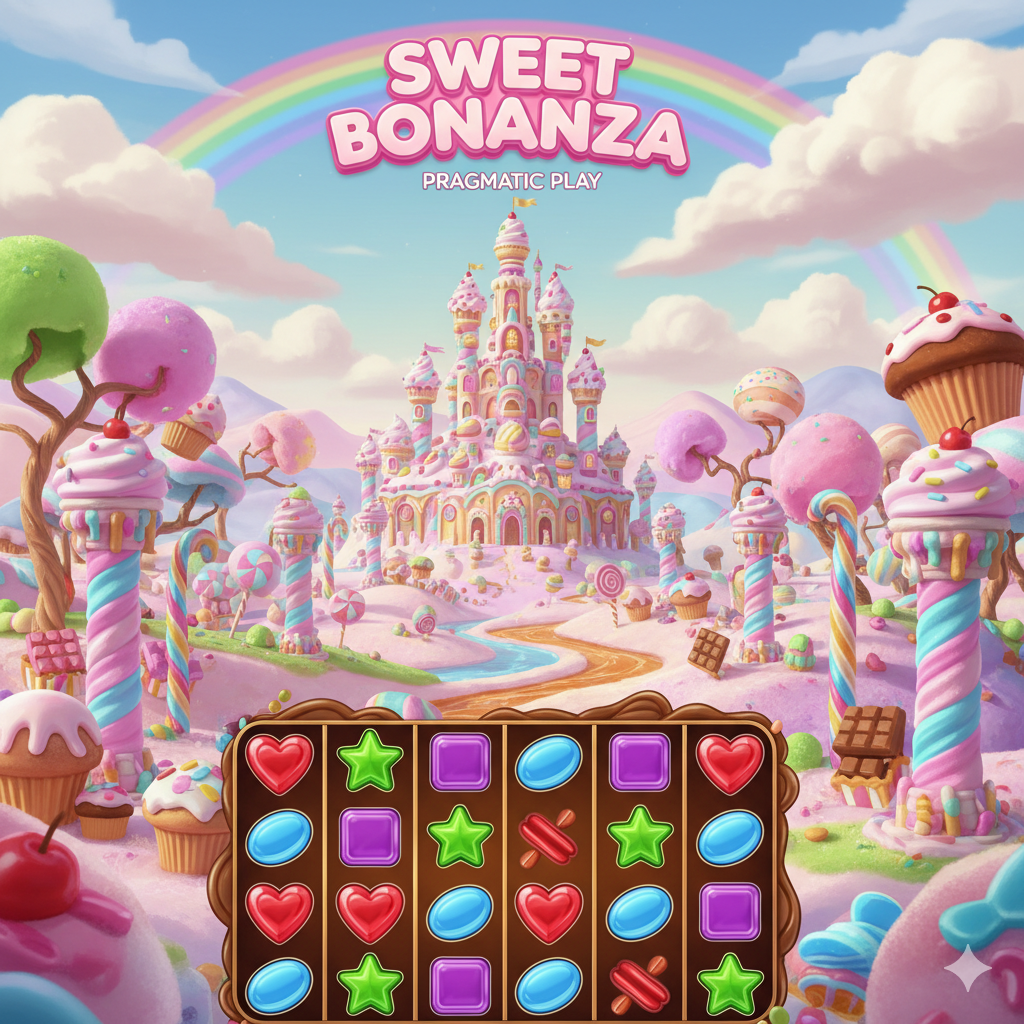The online games went from basic turns of luck to complex psychological design experiences that incorporate probability into the mix. Sweet Bonanza by Pragmatic is a masterclass on how maths and visuals marry to keep the excitement going among the new breed of interactive slots. Behind the sugar flavored universe sits a fragile architecture that harnesses color rhythm and expectation to entice the eye and evoke emotion.
Creating a Believable World
The essential way games capture your attention is through visual storytelling. Sweet Bonanza from Pragmatic first greets players with its saturated colors and a dreamlike land of sweets, clouds, and fruit. Every color has a purpose. These hues of pink, purple and blue “activate the areas of the brain for pleasure and arousal,” creating the same kind of visual high as confections and festivities.
Color is more than just decorative; it directly affects moods and decisions, according to BBC Future. The brain remains on its toes with the juxtaposition of disparate tones, and emotions are kept in the forefront of mind by the design that mostly employs softer gradients in the background to minimize visual fatigue. This all works together to give each spin that just will feel welcoming no matter how many times it is done.
The Maths Behind The Sweets
Beneath the whimsy of Sweet Bonanza by Pragmatic lies the mathematical design of its ever-tightening components. All outcomes are produced through a completely random algorithm, guaranteeing fairness and unpredictability. The high tension comes from the fact that the odds are populated in a way to preserve tension!
This is what game designers refer to as a variable ratio reward schedule. What that boils down to is that rewards will not be given out on a regular schedule, and therefore makes players unable to predict that they will keep coming back frequently. Cluster pay takes the place of standard paylines in this game, meaning that wins can happen in a variety of forms, giving the illusion that there is always a potential win up for grabs. That gives each round an organic pattern of surprise and reward.
Sound as Emotional Architecture
But audio also is a controlling factor in the player experience. Accompanying the video is a happy-sounding song that brings with it light jingles and celebratory audio notes throughout — which seem to be an emotional cue. The sound effects have been designed to match the animation to provide you positive feedback as you are performing appropriate actions on screen.
When players score a win, the music increases slightly in tempo and pitch, a tiny psychological cue the brain associates with success. Like musical rhythm is in the moment, these audio patterns condition expectation and excitement over time.
What Simplicity brings to Game Design nowadays
Though one may achieve increasingly complex visuals with digital technology, simplicity is still one of the most powerful tools in design. Sweet Bonanza by Pragmatic has a clean structure which allows new players to understand the mechanics of the game quickly, however, there is still depth through bonus rounds and multipliers for those that are familiar with the slot machines.
This balance in clarity and depth has been consistent with trends throughout games and app design. Minimalism helps clarify what matters the most: the relationship of risk and reward. There is a reason almost all high retentivity games have a visual design that is almost simplistic, supported mainly by brilliant animation and color changes.
Understanding Anticipation and Reward Psychology
As you can probably tell, the real genius of Pragmatic with Sweet Bonanza, is in the anticipation game that they play. If you look into the neuroscience, it shows that dopamine gets released less on the win and more on the way to the win. This forms an emotional self-reinforcement loop that drives motivation.
Each near-miss, rolling reel, or symbol drop is paced such that that loop persists. The lagging tumble of the last sweet, the twinkling hint of a potential multiplier — not by happy accident, but a design philosophy based on behavioral science. This means ensuring that players are kept in a state of flow where time seems to disappear and everything else dissolves apart from a total focus on the challenge at hand.
The Future of Interactive Play
The next best destination for this continuous advancement in gaming technology is games that can respond to what each individual player actually does. Real-time analytics and responsive design augment a development community taking tailored outcome and visual intensity to the next level within player styles. Newer hits like Sweet Bonanza from Pragmatic hint at this evolution by blending art, emotion and data into an all-in-one experience.
In the years ahead, players will demand more from digital games than mere chance — they will demand a vividly orchestrated experience of arrows and rhythms: a synesthetic composition that feels individually choreographed. This design-science combination is what turns the pursuit of chance into something fun — and arguably into something that resonates emotionally.
